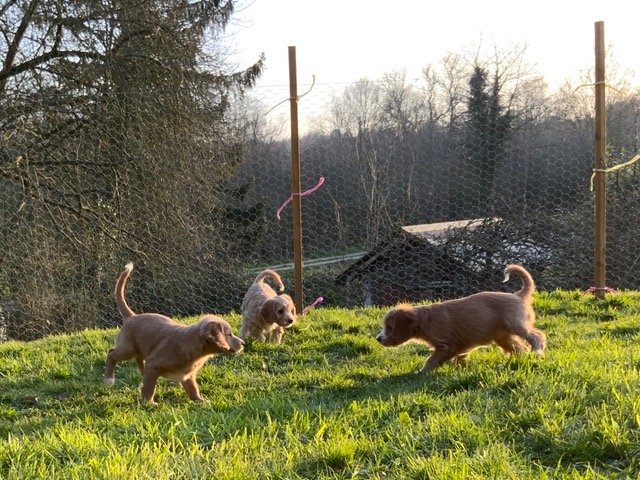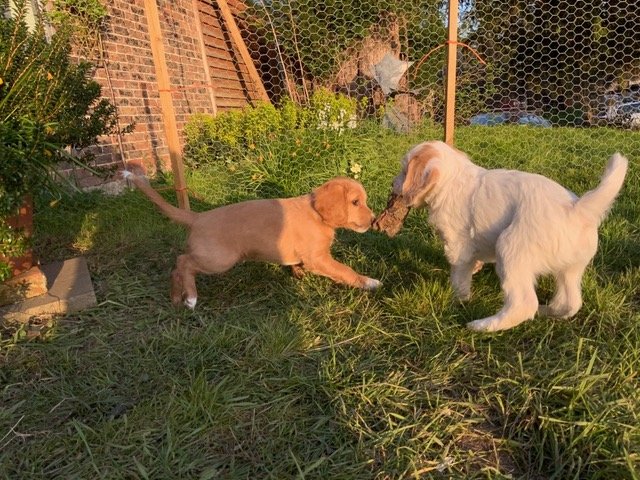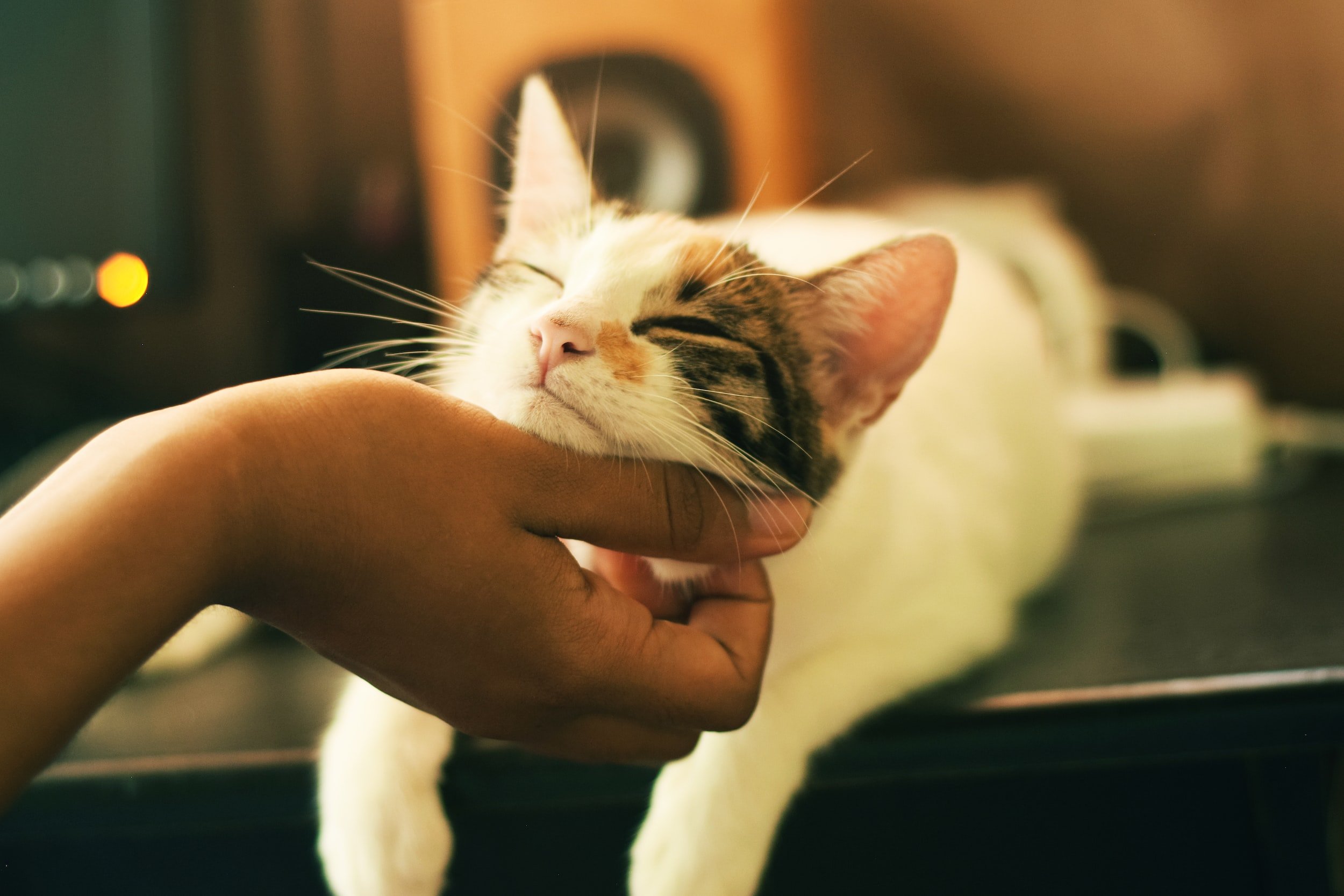Puppies: week 7
With a thundering of little feet and an agility akin to a show jumper, the puppies leapt out of their pen as soon as the cage door was opened and dashed to the front door where they all leapt neatly over the door-sill, down the step and into the garden beyond. The puppies had a new outdoor play area, bigger than the last one and much more secure.
Outdoor play time was now a regular routine in the puppies’ day. The creative use of chicken wire and a few well placed stakes had created a lovely big play area where they could run around safely, with out getting the the far edges of the garden which were less secure. The set up even had a small style where humans could get in/out easily and also Zinny could neatly jump over to see her pups as she wanted.
Today was vet check day. The pups had been regularly monitored for the past few weeks. Today they would have the formal vet check over, along with microchipping and another dose of wormer.
Each pup was checked over from head to tail. Eyes, ears, mouth, teeth, heart, lungs, abdomen legs and genitalia were all looked at. Zinny’s pups were all in good form.
Next they were given their micro chip. In the UK it is compulsory to have a dog microchip as a way of being able to identify it. This is a very simple procedure where a small inert chip only a few millimetres long, is injected under the skin between the shoulder blade.
The chip is quite harmless and contains details of a unique fifteen digit number. The chips sits in place for the lifetime of the dog, doing nothing. It is only when a scanner is passed over the area, that the scanner sends out a small signal to the chip which then bounces back as the unique number.
The number in turn is linked to a computer data base. The data base contains basic details of the pet, alongside contact information for the owner. This means if the dog ever goes missing and is brought in as a stray, the details of the dog can be found via the micro chip and the owner contacted. The system has been in opaque now for many years now and works very well.
Finally the pups were all given the next dose of routine wormer. None of the pups had shown any sign of worms and all were growing well. However, without doing a faecal worm count, there is no easy way of telling if a puppy is carrying worms and it is a good idea to address the potential problem of worms appropriately. This would be their last dose with the breeder. On going worm control could be discussed with the new owner’s vet.
Coming soon is the move to their new homes when every thing would be due to change.
Have a puppy or thinking about having them? Get in touch for support.













